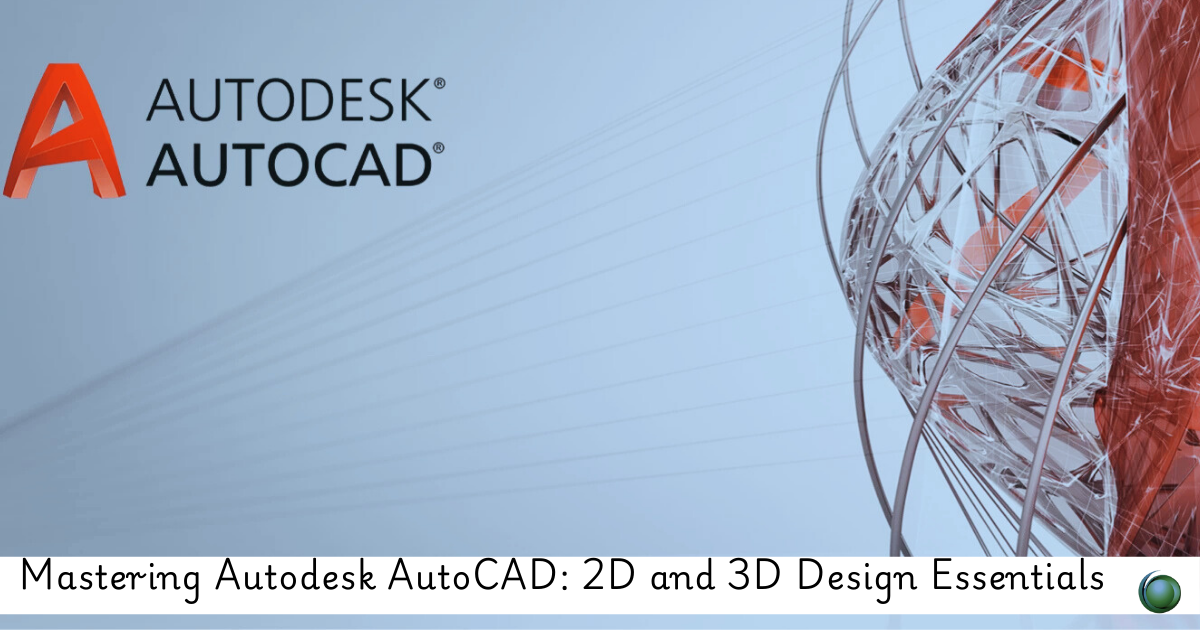Description
Introduction of Autodesk AutoCAD
This course provides an in-depth exploration of AutoCAD, focusing on essential techniques for both 2D and 3D design. Participants will learn to create precise drawings, manage layers, utilize advanced modeling techniques, and implement best practices for effective design workflows. By the end of the course, participants will have the skills needed to master AutoCAD for professional applications.
Prerequisites for Autodesk AutoCAD
- Basic understanding of drafting and design principles (e.g., scale, dimensions, and layout).
- Familiarity with basic computer skills, including navigating file systems and working with software interfaces.
- Experience with any previous CAD software (helpful but not required).
- Basic knowledge of construction or engineering concepts (optional but helpful for context).
- Understanding of 2D drawing concepts (such as creating lines, shapes, and using layers).
Table of Contents
1: Getting Started with AutoCAD
1.1 Overview of AutoCAD Interface and Tools
1.2 Customizing the Workspace for Efficiency
1.3 Setting Up Drawing Units and Preferences
2: Mastering 2D Drawing Techniques
2.1 Creating and Editing Basic Geometric Shapes
2.2 Working with Layers, Linetypes, and Colors(Ref: Autodesk Revit for Beginners: Building Information Modeling (BIM))
2.3 Implementing Dimensioning and Annotation Tools
3: Advanced 2D Design Techniques
3.1 Using Advanced Editing Tools: Trim, Extend, and Fillet
3.2 Implementing Hatching and Gradients
3.3 Creating Blocks and Dynamic Blocks for Reusability
4: Introduction to 3D Modeling in AutoCAD
4.1 Understanding 3D Coordinate Systems and Navigation
4.2 Creating Basic 3D Shapes: Primitives and Solids
4.3 Converting 2D Drawings to 3D Models(Ref: Introduction to Autodesk: A Beginner’s Guide)
5: Advanced 3D Modeling Techniques
5.1 Using Surface and Mesh Modeling Tools
5.2 Applying Materials and Lighting Effects
5.3 Rendering 3D Models for Presentation
6: Organizing and Managing Drawings
6.1 Creating and Managing Drawing Templates
6.2 Utilizing DesignCenter and Tool Palettes
6.3 Organizing Projects with Xrefs and Layouts
7: Best Practices and Tips for AutoCAD Efficiency
7.1 Optimizing Performance for Large Drawings
7.2 Using Shortcuts and Commands for Speed
7.3 Collaborating with Others Using AutoCAD
8: Final Project and Course Review
8.1 Completing a Comprehensive 2D and 3D Design Project
8.2 Presenting the Project and Sharing Design Rationale
8.3 Review of Key Concepts and Skills
8.4 Q&A and Course Conclusion
Conclusion
This training equips participants with the essential skills needed to master Autodesk AutoCAD for both 2D and 3D design. With a strong foundation in AutoCAD techniques, participants will be able to create accurate, professional-grade designs and enhance their overall productivity in the design process.







Reviews
There are no reviews yet.